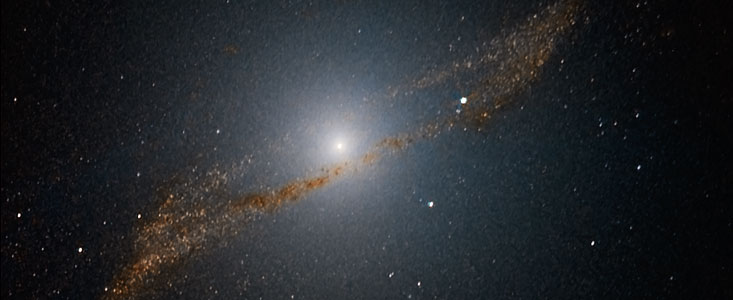Finnish Involvement with ESO

The central parts of Centaurus A reveal the remains of a smaller galaxy that was gulped down about 200 to 700 million years ago. Credit: ESO/Y. Beletsky
Finland joined ESO as a Member State on 7 July 2004. Since then, the country’s community of scientists and engineers has contributed to ESO projects in many key ways, particularly in the development of instruments.
Finland currently contributes 1.44% of ESO’s revenue (2021 contribution), worth 2 765 000 EUR.
As of mid 2022, there are two Finnish employees at ESO, stationed in Chile. Furthermore, ESO has awarded two studentships, three fellowships and one internship to Finnish nationals since 2004.
Finland is represented in the various ESO governing and advisory bodies by astronomers and policy experts; the current Finnish representatives of ESO’s various committees with national representation can be found here.
The ESO Science Outreach Network (ESON) includes Finnish representatives who act as ESO’s media and outreach local contacts.
Here follows some information about Finland’s involvement with ESO.
Discoveries by Finland-based astronomers using ESO telescopes
Finnish researchers and those based at Finnish institutions have been involved in important discoveries using ESO facilities, including
- A team of astronomers led by University of Helsinki’s Jouni Kainulainen that used the SOFI instrument at ESO’s New Technology Telescope (NTT) at La Silla Observatory, to see through the dust of the giant cannibal galaxy Centaurus A, unveiling its “last meal” — a smaller spiral galaxy, currently twisted and warped, in unprecedented detail.
- Mika Juvela, Veli-Matti Pelkonen and Kalevi Mattila at the Helsinki University Observatory who successfully measured the distribution of mass inside a dusty dark filament in a molecular cloud. Their detailed observations were obtained using the NTT.
- Kimmo Lehtinen and Kalevi Mattila at the Helsinki University Observatory who detected a never-before-seen ring of infrared light around a newborn star. The star is embedded in its natal cloud of dust and gas, collapsing under its own gravity. The observations were made with the ISAAC instrument on ESO’s Very Large Telescope (VLT).
- A team involving Finnish astronomers that discovered the distant asteroid “2001 KX76” to be larger than both the dwarf planet Ceres and Pluto’s moon Charon. ESO’s Wide Field Imager at the MPG/2.2-metre telescope at La Silla was key in the discovery.
Finnish involvement in ESO instruments and telescopes at ESO sites
Finland is contributing to many aspects of ESO, with Finnish institutions behind already existing and upcoming instruments based at telescopes on ESO sites. For example, the SOXS (Son of X-shooter) instrument will be a unique spectroscopic facility for following up transient and variable astronomical events from ongoing and future imaging surveys. SOXS will be installed at the ESO’s NTT at the La Silla Observatory, and it has the University of Turku in its consortium.
Finnish involvement in ELT instruments
- The MOSAIC instrument at ESO’s upcoming Extremely Large Telescope (ELT) will peer closer at distant galaxies at the very edge of the observable Universe. MOSAIC is being developed by a consortium in which the University of Helsinki participates.
- Through the University of Turku, Finland participates in the development of the MICADO instrument, which will take high-resolution images at near-infrared wavelengths, identifying exoplanets, resolving individual stars in other galaxies and investigating the mysterious centre of the Milky Way.
Finnish industry and technology contributions to ESO
The Finnish architects Kouvo & Partanen designed the ALMA Residencia at the ALMA Operations Support Facility, close to San Pedro de Atacama in northern Chile. The shape of the buildings and the colour of the exteriors of this major architectural project are designed to meld with the surrounding environment of the ALMA site. In addition, BlueCielo ECM Solutions Oy, another Finnish company, has been awarded multiple contracts related to ESO's information repository.
Finnish industry contributions to the ELT
In addition to participating in the ELT through its role in instrument consortia, Finland has had important industry contributions to the telescope. For example, the Finnish Optoelectr. Research Centre was contracted to do a feasibility study of lasers for laser guide stars in the ELT. Ab Solving Oy, Space Systems Finland Ltd., Bronto Skylift and Atostek Oy are other Finnish companies awarded ELT contracts.